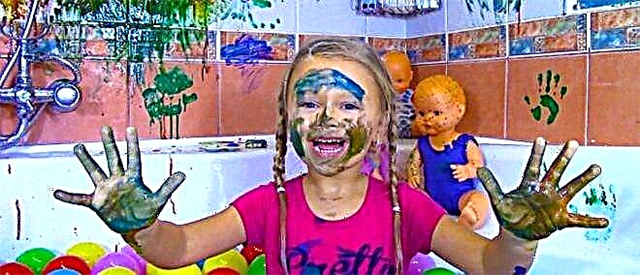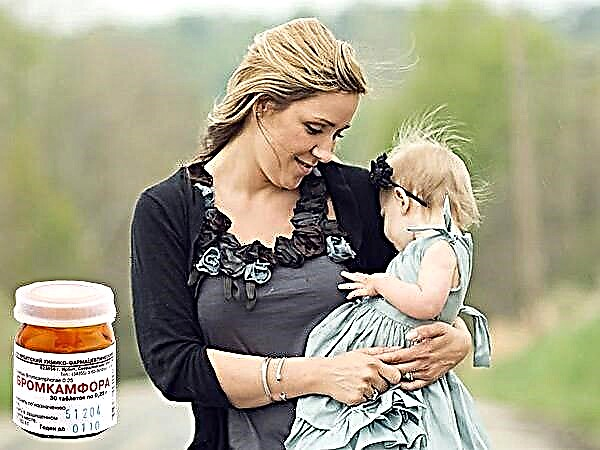
Normally, the color of a child's stool is yellow-brown in color, so discoloration of feces can scare adults. Why can a baby's feces turn white and what should parents do in this case?
Causes
White feces can be both a sign of rather serious diseases of the digestive tract, and a harmless symptom of a change in diet.
In newborns
The feces secreted by newborns can change their appearance depending on the baby's nutrition. If the baby is receiving mother's milk, the mother's diet also affects her bowel movements.
Lightening of the stool of a newborn baby happens when feeding with a mixture. This is usually temporary and after 2-3 days the color of the stool will return to normal. Light-colored feces often appear in a newborn, as a result of the use of antibiotics in the baby.

In older children
Light coloration of feces in children over a year old may appear due to:
- Infectious lesions of the gastrointestinal tract (often rotavirus infection).
- Hepatitis A.
- Inflammatory processes in the pancreas.
- Problems that cause bile stasis, such as kinking, twisting, or obstruction of the gallbladder.
- Whipple's disease. In this case, the child is emptied very often, and the feces are foamy and smell very unpleasant.
- Taking medications that interfere with liver function, such as antibiotics, anti-inflammatory drugs, antifungal drugs, and others.
Periodic appearance
A short, periodic change in the color of the stool (its lightening) is associated with changes in the nutrition of the baby or nursing mother. If the color of the feces was influenced by the products of the mother's menu, then the changes in the stool take place in 10-24 hours. If light-colored stools appear under the influence of supplementation with a mixture, usually its color becomes normal in two to three days. Also, periodic lightening of the stool in babies over 6 months old may be associated with complementary foods.
The use of excess fatty foods, such as butter or sour cream, leads to a lighter color of feces. If parents notice the regular appearance of liquefied light-colored stool, this may be evidence of problems with the digestion of fatty foods in the baby's intestines.

White mucus or plaque
If white mucous clots appear in the child's stool or the feces are covered with a whitish coating, this may be a sign of proctitis or rectal fistula. Usually, simultaneously with such a picture of feces, the child suffers from pain in the anal area. Also, the baby's body temperature may rise. With these symptoms, it is important to immediately consult a doctor.
Lumps or blotches of white
Often, these inclusions are undigested food particles (usually vegetable). They can look like grains, grains, small lumps, fibers. No action is required with such a picture of feces, especially if the child's well-being is not disturbed.
Worms
Almost all worms are white or light yellow. Most often, mothers can see pinworms in the feces, which are small worms about 3-4 mm long. If the size of the worms is larger, then these may be dead roundworms. Seeing white worms in the child's feces, you need to pass tests and treat the child under the supervision of a parasitologist.

Combination with pain, fever, or darkening of urine
If the cause of the change in the color of the feces was inflammation of the pancreas, then the child will also complain of abdominal pain.
In the case when the stool suddenly became discolored, the child's urine darkened, the temperature rose and there were pains in the right side, there is a high probability that acute cholecystitis or hepatitis manifests itself this way. These are dangerous symptoms, so it is important for parents to call a doctor as soon as possible when they appear.
What to do?
When you notice white or light yellow stool in a child for the first time, observe the color and consistency of the stool for a few more days. If the changes in the color of the feces passed on their own in a short time, and the child's well-being did not worsen at the same time, there is no need to worry and do anything. If the child complains of pain, and you notice other adverse symptoms, it is important to consult a specialist and exclude the presence of diseases of the digestive tract.

When should a doctor be called?
Be sure to contact the pediatrician if the child, in addition to the light color of feces, has the following symptoms:
- Severe abdominal distension.
- Nausea as well as vomiting.
- Elevated temperature.
- Stomach ache.
- Sclera and skin yellow.
- Dark urine.
- Poor appetite and weight loss.
- Weakness, capricious behavior, sleep disturbance.
- Intense thirst.



